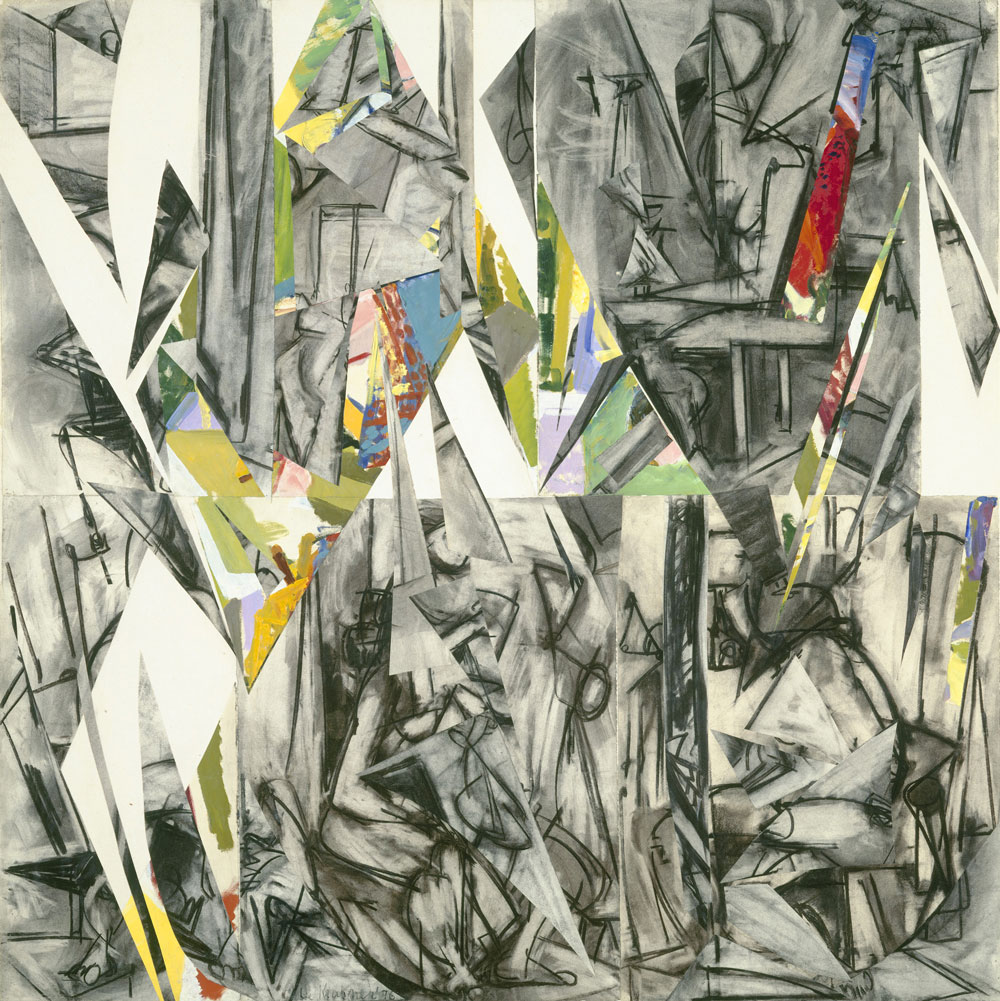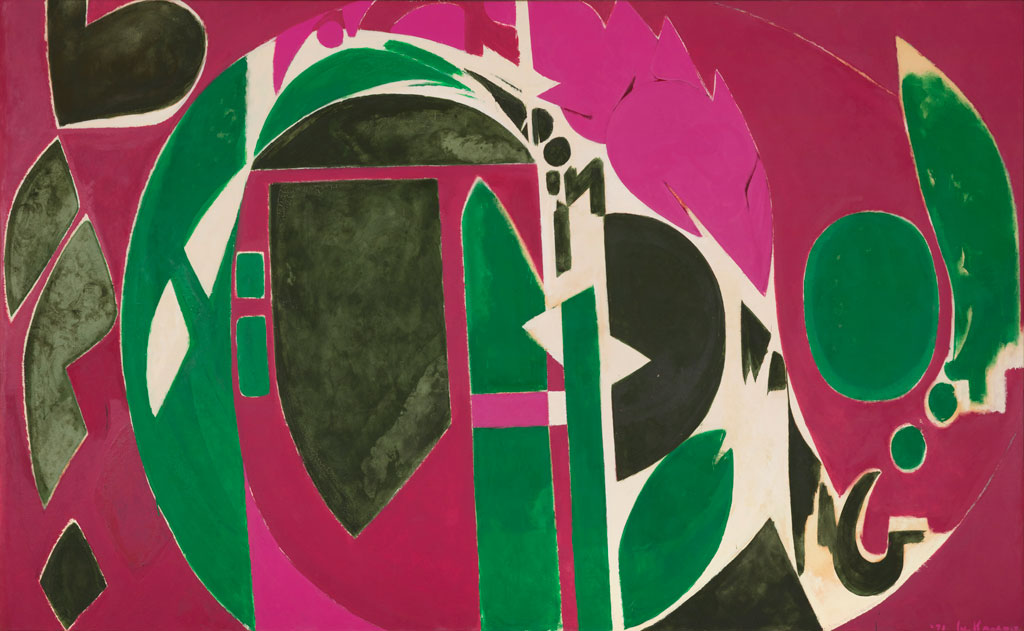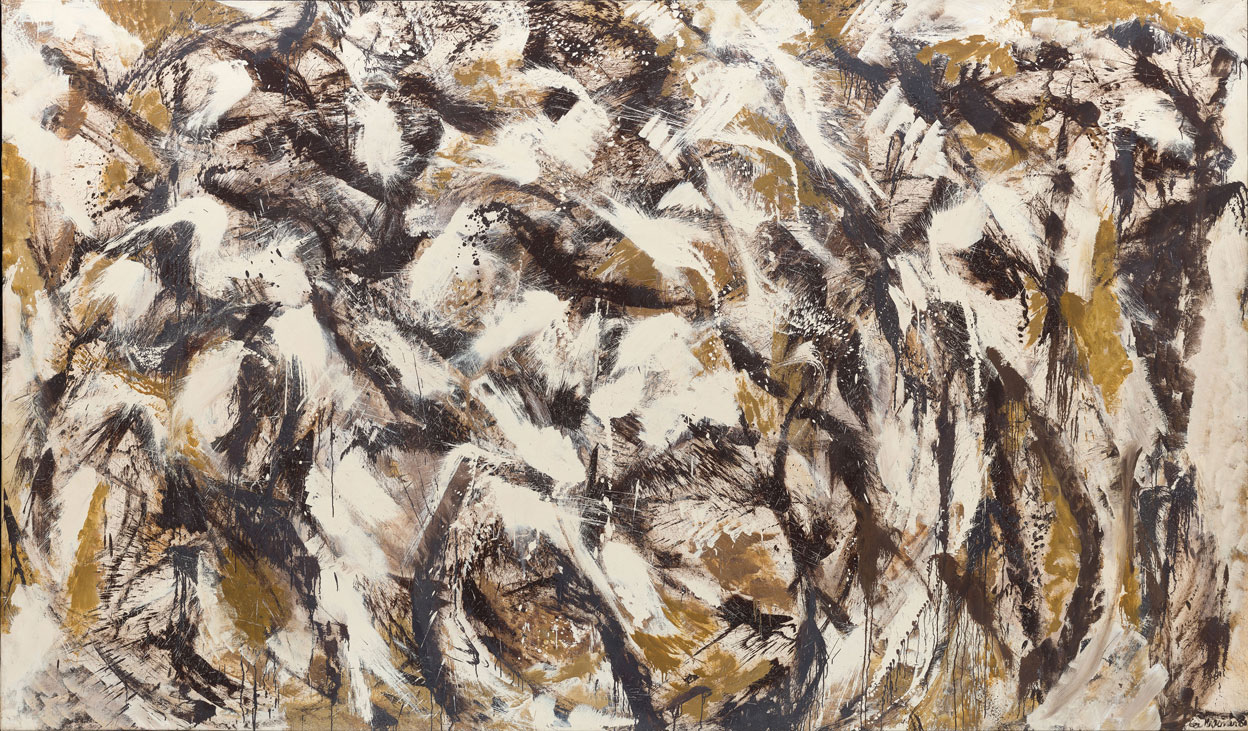ART-PREVIEW:Lee Krasner
 Lee Krasner is considered one of the most critical figures in the evolution of American art in the second half of the 20th Century. Emerging from the first generation of Abstract Expressionist painters, Krasner committed to a six-decade persistent exploration of novel approaches to painting and collage. Her huge contribution to abstract expressionism was overshadowed for years by the work of her husband, Jackson Pollock.
Lee Krasner is considered one of the most critical figures in the evolution of American art in the second half of the 20th Century. Emerging from the first generation of Abstract Expressionist painters, Krasner committed to a six-decade persistent exploration of novel approaches to painting and collage. Her huge contribution to abstract expressionism was overshadowed for years by the work of her husband, Jackson Pollock.
By Efi Michalarou
Photo: Schirn Kunsthalle Archive
For the first time in more than 50 years, Lee Krasner’s work will be on view in a major European retrospective. The Schirn Kunsthalle Frankfurt is presenting paintings, collages, and drawings as well as films and photographs. The exhibition presents works from across Krasner’s entire oeuvre: self-portraits from the late 1920s, charcoal life drawings, groups of works such as her renowned “Little” Images from the 1940s and her “Prophecy” series from the 1950s, along with works from her “Umber” and “Primary” series from the 1960s and late collages from the 1970s. The exhibition is structured according to Lee Krasner’s principal periods of work from the 1920s until the 1970s. The starting point lies with her early work, which permits the viewer to trace clearly her path toward abstraction. Among other works, is on presentation Krasner’s self-portrait from 1928, which she confidently submitted when applying to the life-drawing class at the National Academy of Design, as well as life drawings in charcoal from her time as a student, which are influenced by Cubism as a result of the classes she attended at the Hans Hofmann School of Fine Arts. Also on show are photographs of her window-display designs for the War Services Project, in which Krasner combined photography, drawing, and typography in the style of Russian Constructivism. Lee Krasner’s move to a farmhouse in Springs on Long Island with her husband Jackson Pollock in 1945 marked the first of a succession of turning points in her oeuvre. With the abstract “Little Images” created between 1946 and 1950, she turned away from her early work, which had been influenced by Cubism and the European avant-garde. From the first phase of this series, the exhibition is presenting, for example, “Shattered Color” (1947) and “Abstract No. 2” (1947), which, with their all-over technique, recall Pollock’s painting method; Krasner, however, worked in a more controlled manner using oil paint. The exhibition is also presenting later pictures from the series, such as “Composition” (1949) and “Untitled (Little Image)” (1950), which are constructed according to a strict grid and are painted from right to left, a working method that may be derived from the Hebrew script which Krasner learned to write as a child. Krasner, who repeatedly studied the ancient art of calligraphy, described these paintings as “hieroglyphic”. Krasner referred back to her own earlier works for the first time with her Collage Paintings which she created between 1953 and 1956. In this series, she combined torn-up drawings and older paintings and developed a painterly approach to the technique of collage. The exhibition presents, for example, “Shattered Light” (1954), in which the painting underneath the collage is clearly visible; the torn pieces of paper are worked almost seamlessly into the picture. Krasner’s early Collage Paintings, such as “Burning Candles” (1955), are detailed and painted in shades of brown, while the later ones are assembled from more expansive, colored forms, which the artist no longer simply tore but also cut. The other works shown include the work “Bald Eagle” (1955), for which Krasner discarded fragments by Pollock. The painting “Prophecy” (1956) marks a turning point in both Krasner’s style and biography. She had begun it while Pollock was still alive and completed it after his sudden death. With this painting, she returned to an almost figural pictorial language based on Cubism. Further works in this series take up the subjects of death, birth, and reincarnation. From 1956, Lee Krasner used Pollock’s former studio and worked for the first time on monumental canvases, which she attached directly to the wall. She created the large-format, gestural paintings of her “Umber” series, also known as “Night Journeys”. These are among her most expressive works. Since she refused to paint with color under artificial light and was only working at night during this period, the palette is reduced to white and umber. Krasner was 1.60 meters tall, but she worked on canvases up to a height of 2.50 meters, using her whole body and employing long-handled paintbrushes with expansive, rhythmical movements. In spite of the large formats, she never made preparatory sketches or preliminary studies before painting. From this series, the exhibition is showing works such as “The Eye is the First Circle” (1960). In the early 1960s, Krasner used strong colors again in her “Primary” Series. Her gestural paintings became increasingly free and more calligraphic, for example in “Another Storm” (1963). In “Through Blue” (1963) and “Icarus” (1964), Krasner experimented with painting with her left hand after she had broken her right arm. She often pressed the paint directly onto the canvas and then worked it with her fingertips. Another recurring motif in her work is nature. Starting in 1969, Krasner created parallel smaller-format series using gouache on handmade paper, which she titled “Seed”, “Earth”, “Water” and “Hieroglyphs”. The exhibition concludes with two series from the artist’s late work. In the early 1970s, Krasner began a series in which she painted abstract forms with strongly contrasting colors, “Palingenesis” (1971) is one of the main works from this period. Painted works made during this phase evoke the color-field paintings of Mark Rothko or Barnett Newman, although Krasner’s later collages of the 1950s had already paved the way for this approach. In 1976, she created collages with sharp-edged forms, for which the artist used as material her own drawings and life studies in charcoal from her time as a student at the Hans Hofmann School, cutting them with scissors. As was the case with her early collages, these works represent Krasner’s critical exploration of her own work and legacy.
Info: Curators: Eleanor Nairne and Dr. Ilka Voermann, Schirn Kunsthalle Frankfurt, Römerberg, Frankfurt, Duration: 11/10/19-12/1/20, Days & Hours: Tue & Fri-Sun 10:00-19:00, Wed-Thu 10:00-22:00, www.schirn.de





